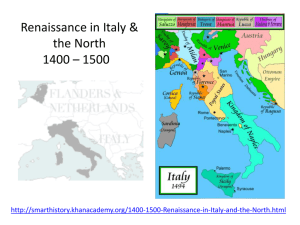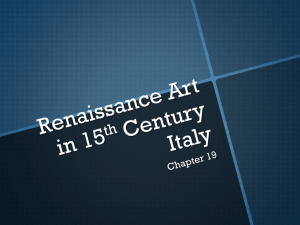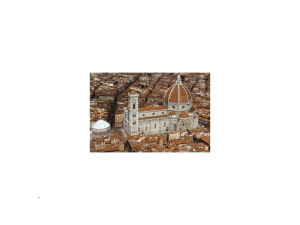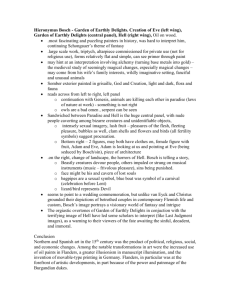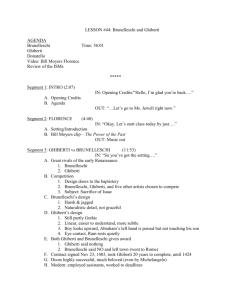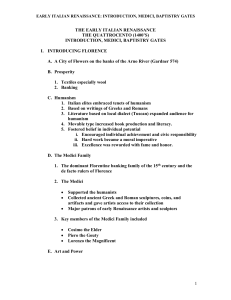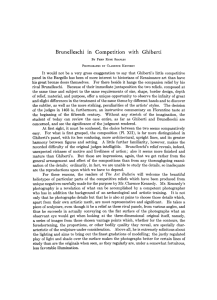Comparisons Sacrifice of Isaac with notes
advertisement
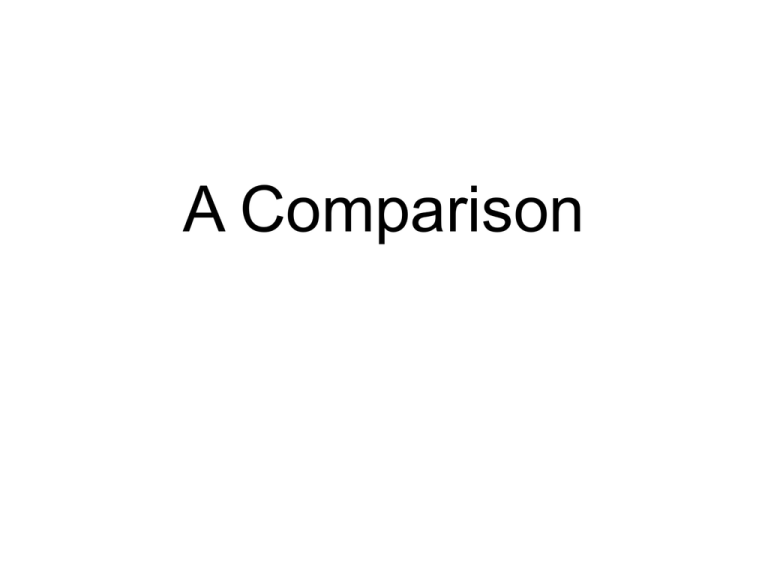
A Comparison Lorenzo Ghiberti Sacrifice of Isaac competition panel for the east doors of the Baptistery of Florence Cathedral 1401-1402 Filippo Brunelleschi Sacrifice of Isaac competition panel for the east doors of the Baptistery of Florence Cathedral 1401-1402 Which is more successful? Why? •In Brunelleschi’s Sacrifice of Isaac, the artist has centered the composition on the moment of the moment of sacrifice. Isaac’s body is at the very center of the composition. Brunelleschi has scattered the other objects and figures into the corners of the frame, so that they seem to revolve around the central focus of the composition. The composition is unified by the frame but not by the internal connections between figures or objects. •Brunelleschi’s Sacrifice of Isaac is marked by tension. Isaac is hunched over; his posture conveys fear. Abraham is leaning over him ready to plunge the knife into his flesh. Isaac seems to be tensing his body for the pain that he anticipates. At the final moment, the angel literally grabs Abraham’s arm to stop him from killing his son. •Brunelleschi has not created a strong sense of illusionistic space. However, the intervening angel does seem to fly out and across the frame to stop Abraham. And Brunelleschi has seemed to create orthogonals that lead to a sort of vanishing point cenetred at the knife’s point. •Brunelleschi represents the body with medieval emotionalism. The body is not entirely realistic and has not been displayed as a thing of beauty. Instead the body is used to convey Isaac’s fear; the body seems tense and huddled. •In Ghiberti’s Sacrifice of Isaac, the artist has placed Abraham at the center of the frame. Ghiberti has used a rock which angles diagonally across the scene to divide the image into two different narrative scenes. In the top right half, Ghiberti has placed the most important dramatic moment in the narrative—the moment of sacrifice. The composition as a whole, though divided into two parts, is a unified whole. •The artist has created enormous emotional tension as well as physical tension through Abraham’s arm that is arched tightly back to gather force for the act of killing. Ghiberti has also used the intense gaze between father and son to heighten the tension. The son looks directly at his father confronting him silently as the father prepares to sacrifice him. This mutual gaze is almost too painful to witness. •Ghiberti has created a Sense of depth with the big rock that reaches diagonally back into the space of the composition. In the middle ground, the altar tilts forward also creating a sense of depth. Abraham steps forward with his left foot (to balance the thrust of his right arm). He seems to step out of the frame, again creating illusionistic space. •Isaac is beautfully modled. His entire toroso is displayed for the viewer’s enjoyment. The muscles and limbs are modeled on classical forms; they are well-proportioned. The body is both gorgeous and realistic—the body seems alive--heightening the viewer’s sense that God’s demand—this sacrifice—is overwhelming.

